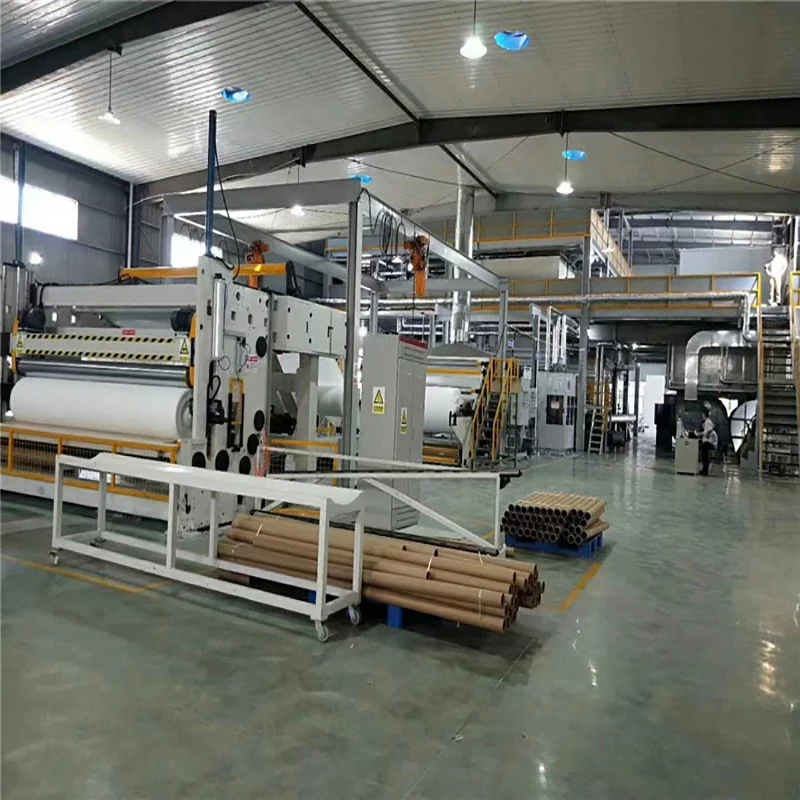В последние годы ткань, полученная методом экструзии из расплава, привлекла значительное внимание., особенно из-за его решающей роли в производстве высококачественных фильтрующих материалов., медицинские принадлежности и различные другие применения. Эта уникальная нетканая ткань создается с использованием специализированного процесса, который включает в себя таяние полимерные гранулы и образование тонких волокон.

Роль нетканых производителей оборудования
Производство ткани с раздутой расплатой в значительной степени зависит от специализированного оборудования, разработанного производители оборудования для производства нетканых материалов. Как ведущая нетканая фабрика машин в Китае, Мы предоставляем качественное оборудование на рынке за рубежом.
Понимание ткани с взорванной таянием
Ткань в расплавленном виде - это тип нетканой ткани, изготовленной из термопластичных полимеров. Процесс производит очень тонкие волокна, обычно меньше 10 Микроны в диаметре, которые затем собираются для формирования веб-структуры. Эта ткань известна своими превосходными свойствами фильтрации, Сделать его идеальным для использования в масках, воздушные фильтры, и другие приложения, требующие фильтрации частиц.
Ключевые свойства ткани с таянием
- Высокая эффективность фильтрации: Небольшой диаметр волокон допускает высокую площадь поверхности, который повышает способность ткани ловить частицы.
- Легкий и мягкий: Ткань из взорвания таяла легкая и имеет мягкую текстуру, Сделать его комфортно для использования в медицинских приложениях, таких как маски для лица.
- Гидрофобная природа: Многие ткани с таянием имеют гидрофобные свойства, предотвращение проникновения воды в материал, что имеет решающее значение для определенных применений.
Процесс производства ткани, взорванной таянием
Производство ткани с раздутой расплатой включает в себя несколько ключевых этапов:
1. Выбор материала
Процесс начинается с выбора термопластичных полимеров, обычно полипропилен, но также включая другие материалы, такие как полиэстер или полиамид. Эти полимеры выбираются на основе желаемых свойств, такие как сила, Гибкость, и эффективность фильтрации.
2. Плавив полимер
Выбранные полимерные гранулы подаются в машина для выдувной ткани из расплава, где они нагреваются до своей температуры плавления. Обычно это достигается с использованием серии нагретых экструдеров, которые непрерывно питают и растопит гранулы. Расплавленный полимер затем переносят в матрицу.
3. Формирование волокна
Как только полимер расплавится, Он вынужден через спиннерет - устройство с несколькими небольшими отверстиями - при высоком давлении. Поскольку расплавленный полимер выходит из Spinneret, Он подвергается высокоскоростному воздушному потоку, производимому соплами горячих воздуха. Этот воздушный поток растягивается и охлаждает расплавленные нити, заставляя их закрепить в мелкие волокна.
4. Веб -формация
Изготовленные тонкие волокна собираются на движущейся конвейерной ленте или барабане. Как волокна прохладные, Они переплетают и образуют веб-структуру, которая является основой ткани с раздутой расплатой. Плотность и толщина ткани можно контролировать путем регулировки скорости потока полимера и скорости конвейера.
5. Связывание и отделка
Чтобы улучшить свойства ткани, Интернет может пройти дополнительные процедуры, такие как тепловая связь или применение клейких агентов. Эти процессы помогают улучшить прочность и долговечность ткани. Заготовленная ткань, выдувшая таяние, также может быть обработана антистатическими агентами или другими химическими отделками для повышения его функциональности.
6. Резка и упаковка
Как только производится ткань с раздутой расплатой, Он раскатывается в большие листы или нарезается в определенные измерения на основе предполагаемого применения. Конечный продукт затем упаковывается для распространения производителям и поставщикам.
Ключевое оборудование, поставляемое производителями
- Печать взорванные экструдеры: Эти машины необходимы для таяния и вытягивания полимера. Они предназначены для поддержания точного контроля температуры и обеспечения последовательных скоростей потока.
- Спиннер: Высококачественные спиннеры имеют решающее значение для производства равномерных волокон. Производители предлагают настраиваемые проекты Spinneret для удовлетворения конкретных производственных потребностей.
- Системы обработки воздуха: Правильный воздушный поток жизненно важен для образования волокна. Производители нетканых машин обеспечивают системы обработки воздуха, которые обеспечивают оптимальный контроль воздушного потока и температуру во время производства.
- Оборудование для обмотки и резки: Чтобы подготовить конечный продукт, Производители поставляют системы обмотки, которые катят ткань и режущие машины, которые могут нарезать ткань на желаемые размеры.
Инновации в технологии расплавленного взорвания
Производители нетканых машин продолжают вводить новшества, Разработка более эффективных и устойчивых методов производства. Это включает в себя достижения в области автоматизации, которые оптимизируют производственный процесс и снижают затраты на рабочую силу. Кроме того, Производители сосредоточены на экологически чистых практиках, такие как переработка материалов и минимизация отходов во время производства.
Применение ткани с раздутой расплатой
Ткань с расплатой широко используется в различных отраслях промышленности из -за ее уникальных свойств. Некоторые из наиболее распространенных применений включают:
- Медицинские принадлежности: Ткань в основном используется в производстве хирургических масок, респираторы, и другой медицинский текстиль из -за его высокой эффективности фильтрации.
- Фильтрационные продукты: Ткань из таяния используется в воздухе и жидких фильтрах, Обеспечение удаления частиц и загрязнений в различных приложениях.
- Гигиенические продукты: Эта ткань также используется в одноразовых подгузниках, Женские гигиенические продукты, и другие предметы личной гигиены.
- Промышленное применение: Ткань в расплавленном взорвании может быть использована в масляных поглощениях, изоляция, и защитная одежда.
Заключение
Процесс производства расплавленной ткани является сложным и высокоспециализированным усилием, которое играет жизненно важную роль в различных отраслях промышленности. От его происхождения в выборе полимеров до сложных работ машины для тканей, выдувшей расплавленный, Каждый шаг имеет решающее значение для создания продукта, известного своими исключительными свойствами фильтрации и универсальностью.
